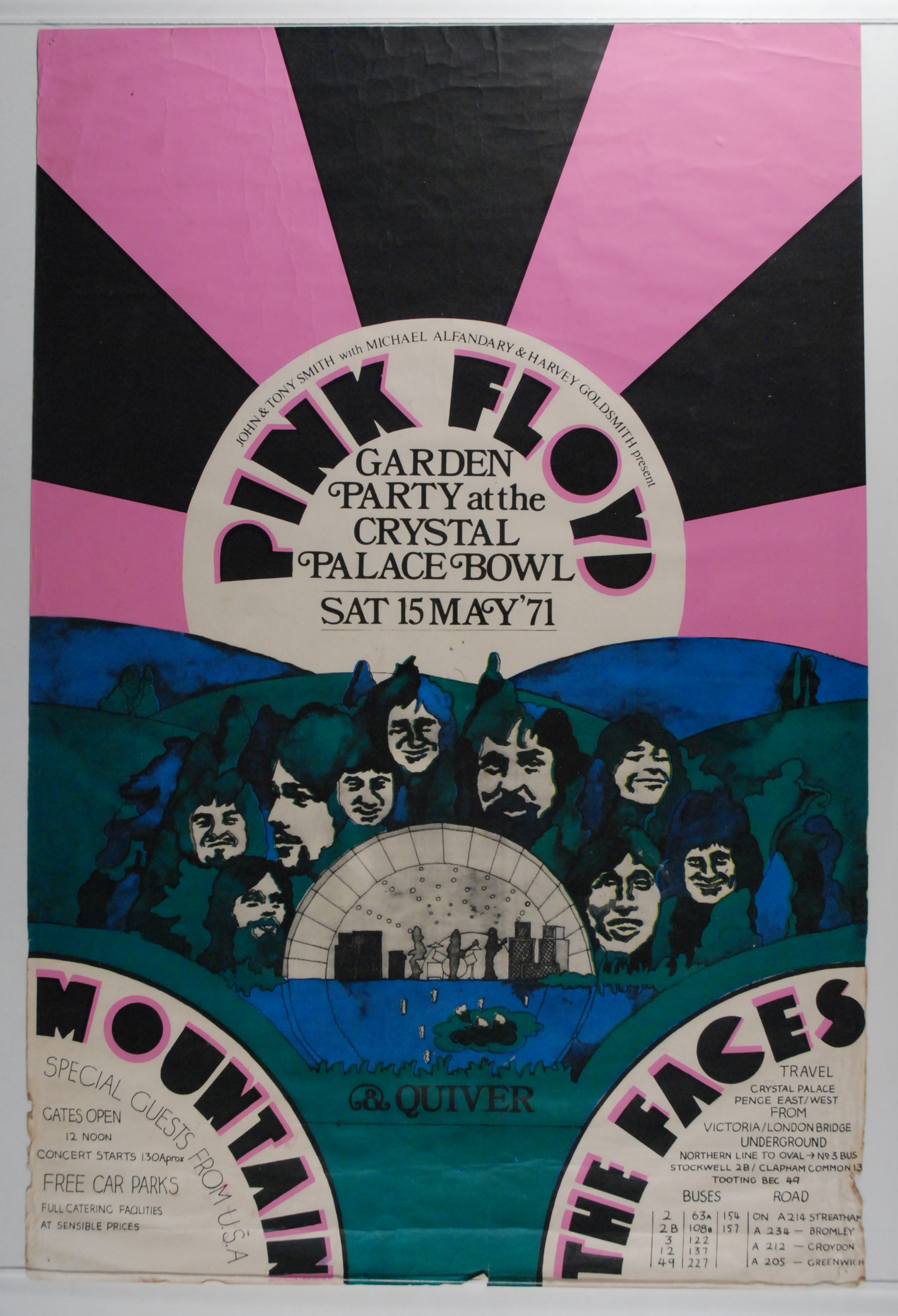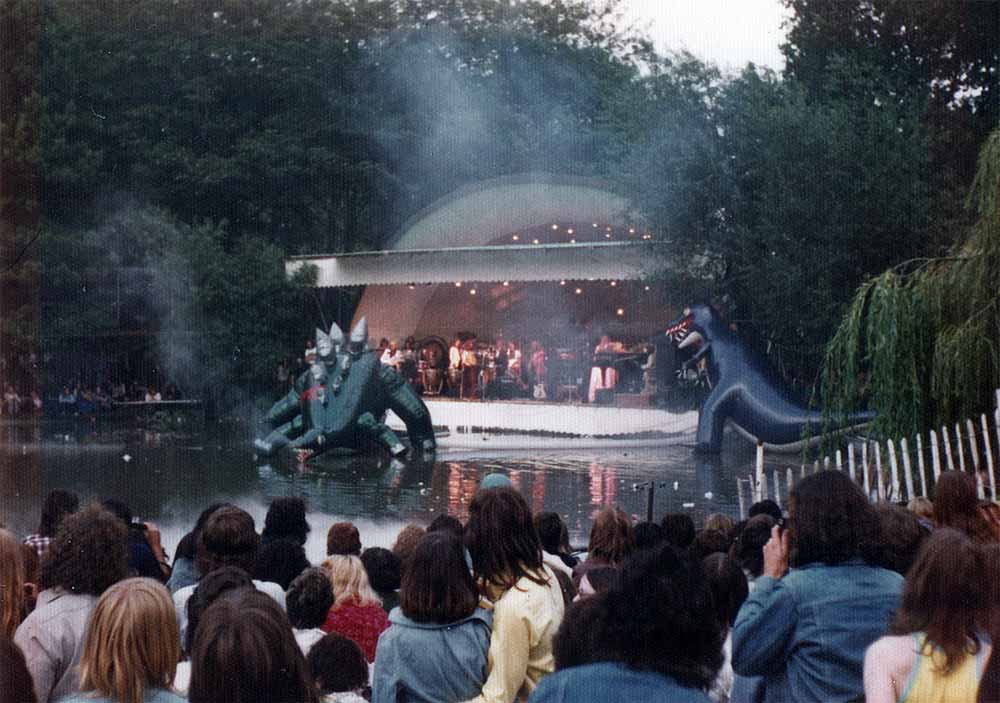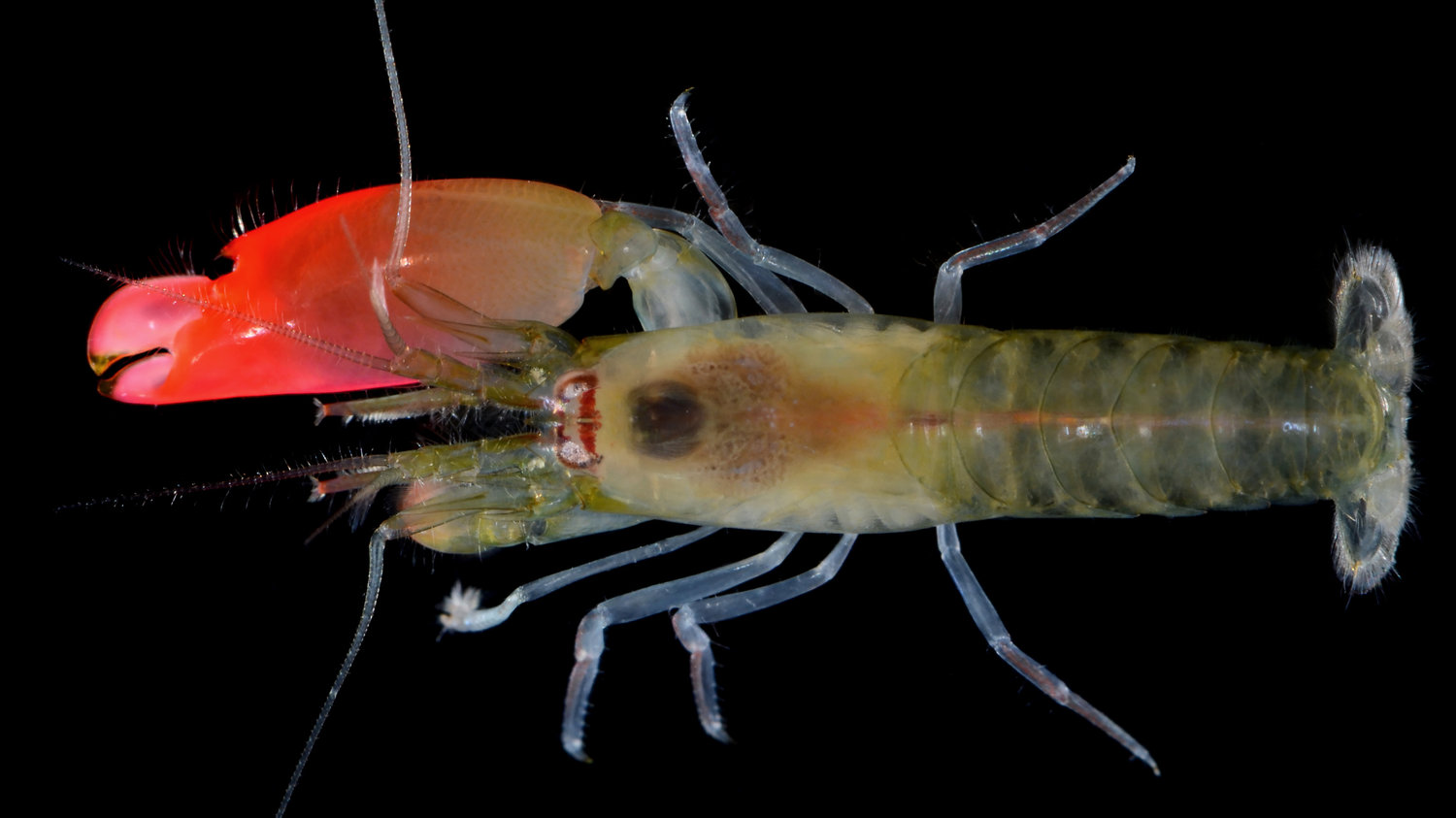
+ Welcome to Soundfly! We help curious musicians meet their goals with creative online courses. Whatever you want to learn, whenever you need to learn it. Subscribe now to start learning on the ’Fly.
To say that Pink Floyd has a bit of a strange history is an understatement. From the trippy rumors that Dark Side of the Moon syncs up perfectly with The Wizard of Oz, to having the first rock album to ever be played in space, a live album (sans audience) recorded in Pompeii, and writing one of our favorite songs in 7/4, this band has intrigue.
So for a story to be considered unusual by Pink Floyd standards, it would have to be exceedingly strange. Well, read on, because I bring you one of the strangest rock ‘n’ roll tales of all time.
The location was the Crystal Palace Gardens — the former location of the Crystal Palace, a holdover from the World’s Fair era which featured huge statues of Egyptian sphinxes, giant water towers, and fountains that shot water hundreds of feet in the air. In other words, your typical, tripped out Pink Floyd concert venue. After the demise of the eponymous Crystal Palace, the site became the location of choice for many cultural functions. This gave rise to the Crystal Palace Garden Parties, a series of Woodstock-like events held between 1971 and 1980, featuring powerful live acts such as The Beach Boys, The Faces, Elton John, Lou Reed, Santana, Bob Marley, Joe Cocker, and, of course, Pink Floyd.
Our story begins on May 15, 1971, with the night’s event featuring Floyd as the headliner, supported by Mountain, The Faces, and Quiver.

Just as Pink Floyd took the stage to perform at the end of a long afternoon, torrential rains began. But the band didn’t let this dampen their spirits. They continued playing and brave fans held out with plastic sheets to hear the band complete their set.
As legend has it, at one unfortunate moment, the band rang out and unleashed a single powerful note, and every single fish in the large nearby pond died.

Okay so first of all, did this really happen? And how could this actually happen?
Given that this was nearly 50 years ago, memory and lore may have warped the story, but some people really do believe that a particularly sour note caused those fish to die. In reality, their death was more likely due to a perfect storm of co-occurring events.
It all started to go wrong with the band’s giant inflatable octopus.
Yup, that’s right. The band had set up a giant inflatable octopus in the pond near the stage. They intended to blow it up with underwater smoke flares. Unfortunately, overeager concertgoers wading around the water caused the octopus to develop several tears. These caused smoke to escape into the pond instead of filling the octopus.
To make matters worse, the band had also dumped a ton of dry ice, orange smoke bombs, and fireworks into the pond mechanism for added psychedelic effects. The combination of these likely poisoned and suffocated the marine life in the pond.
And if that hadn’t already killed them all off, the final blow could have been Pink Floyd’s patented quadraphonic sound system — a wall of surround sound placed around the outdoor venue. This sent massive sound waves through the earth toward the pond. Sound was everywhere, it was loud, a shock to everyone and everything. The roughly 95 dB vibrations coming off the stage likely killed any remaining fish struggling to breathe in the smoke-filled water.
It may have even killed the water lilies.
The agony continued when later, the band received a bill from the city government to repay the cost of the thousands of dead fish and restore marine life to the garden, blaming Pink Floyd outright for the death toll.
This event has become so imprinted on the minds of Floyd fans that when researchers named a species of shrimp after the band, many assumed it was a reference to the band’s killer instincts. Rather, it has more to do with the fact that the shrimp’s giant, neon-pink claw is capable of producing an awe-inspiring 210 dB sound wave that kills small fish with a single snap.

That’s one heck of a reputation for a rock band, and one heck of a fish tale.
Improve all aspects of your music on Soundfly.
Subscribe to get unlimited access to all of our course content, an invitation to join our members-only Slack community forum, exclusive perks from partner brands, and massive discounts on personalized mentor sessions for guided learning. Learn what you want, whenever you want, with total freedom.




